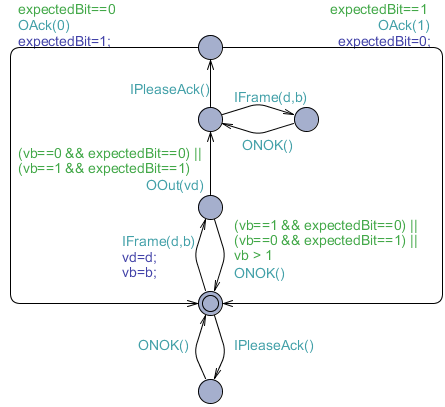We employ the UPPAAL GUI to specify SUTs. However, the syntax we use is slightly different from the syntax defined by the UPPAAL developers. We support modelling of locations and transitions, where
Currently, Tomte can learn SUTs that may only remember the last and first occurrence of a parameter. We are not able yet to learn timed systems. Figure 1 shows an example model of the alternating bit protocol receiver that conforms to our syntax.

In addition to modelling the system, we require a number of declarations (added in the 'Declarations' section in UPPAAL), which are
For the alternating bit protocol receiver model shown above, the declarations are as follows:
const int zero = 0;
const int one = 1;
int vd;
int vb;
int expectedBit = 0;
void IFrame(int d, int b) {
}
void IPleaseAck() {
}
void OOut(int vd) {
}
void OAck(int vb) {
}
void ONOK() {
}
Finally, copy your file to the subfolder 'models'.